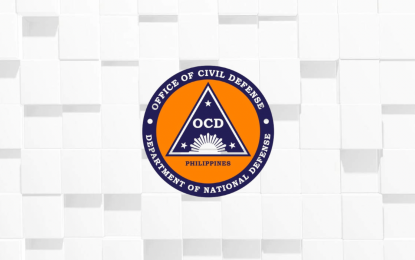
Image courtesy of Civil Defense Western Visayas FB page
ILOILO CITY – The island of Boracay in Aklan’s Malay town is now a haven for endangered turtle species.
“Boracay is rich in biodiversity, serving as a habitat for marine turtles and other marine wildlife,” said Joanette Opeda of the Community Environment and Natural Resources Office (CENRO) Boracay of the Department of Environment and Natural Resources (DENR).
Opeda said the Olive ridley turtles (Lepidochelys olivacea) and the green sea turtle (Chelonia mydas) are common species nesting on the island. CENRO also documented the presence of hawksbill turtle (Eretmochelys imbricate) in the area.
On Jan. 5, she said they facilitated the release of 113 healthy Olive ridley turtle hatchlings at the beach area of Shangri-La Boracay Resort and Spa in Punta Bunga, Brgy. Yapak.
They emerged from their nest in the evening of Jan. 4 since they were monitored in the middle of November last year.
“So far, that was the biggest number that we have released, which means their environment is very healthy,” she said.
She said they came up with a database of the marine population habitat, including a map of where the turtles thrive back since 2018 that they update annually.
“The marine turtle always goes back to their habitat during every nesting cycle. All over the island, they have nesting sites,” she said.
Last year alone, CENRO Boracay documented 79 Olive ridley baby turtles emerging from their nest in January, followed by another batch of 89 hatchlings in February, both at the beachfront of the New Coast Boracay in Brgy. Yapak.
Further, 129 hawksbill turtle babies and 76 hatchlings of the green sea turtle were released back to their environment after nesting at the coastline of Puka Beach also in Brgy. Yapak, in August and September, respectively.
Olive ridley and green sea turtles were classified as endangered and the hawksbill as critically endangered under DENR Administrative Order 9 series of 2019 entitled “Updated National List of Threatened Fauna and their Categories.”
The order defined critically endangered as facing an extremely high risk of extinction in the wild in the immediate future, while endangered means their survival in the wild is unlikely if causal factors continue operating.
Opeda said development like buildings is prohibited in their nesting areas to also protect their habitat.
Currently, they are waiting for the two batches of over 70 eggs each to hatch at their nesting site on the coast of Puka and Ilig-Iligan beaches anytime this month.
Opeda said a massive information drive is conducted before the release of hatchlings to raise public awareness of the need to protect them.
They also have Wildlife Information Officers on the island helping with the campaign.
She urged the community to immediately inform their office by calling 288 - 9727 when they see turtles nesting in their areas for appropriate action.
In a statement, DENR 6 Regional Executive Director Livino B. Duran said it gives them hope to see those hatchlings safely released into the wide, open sea where they can thrive.
“I laud the efforts of CENRO Boracay to continue monitoring turtle nesting sites on the island. This activity is also a learning opportunity for those who witnessed the turtle release first-hand. Marine turtles play an important role in our oceans, and it is our collective responsibility to protect them,” Duran said after the release of the Olive ridley on Jan. 5. (PNA)
